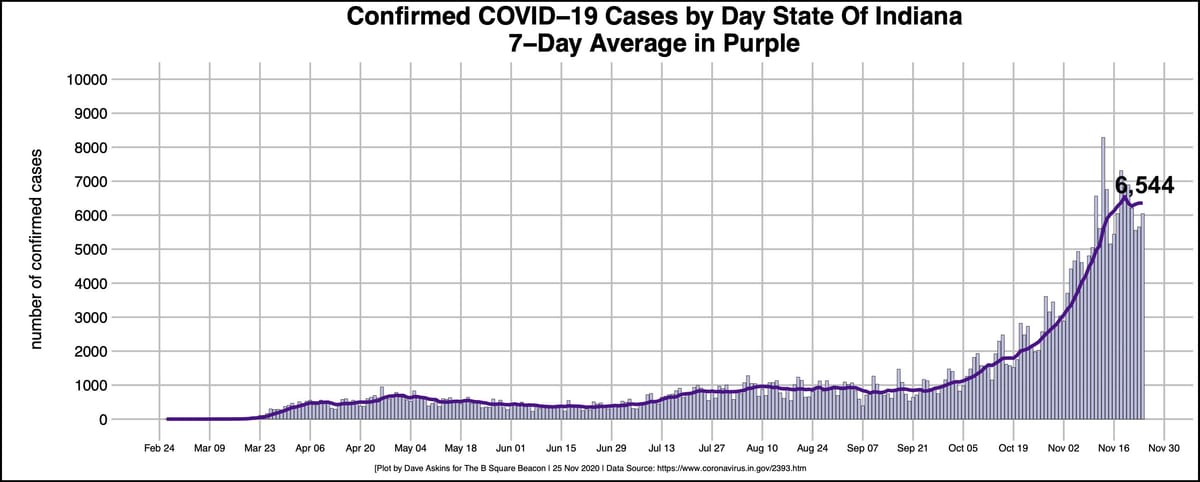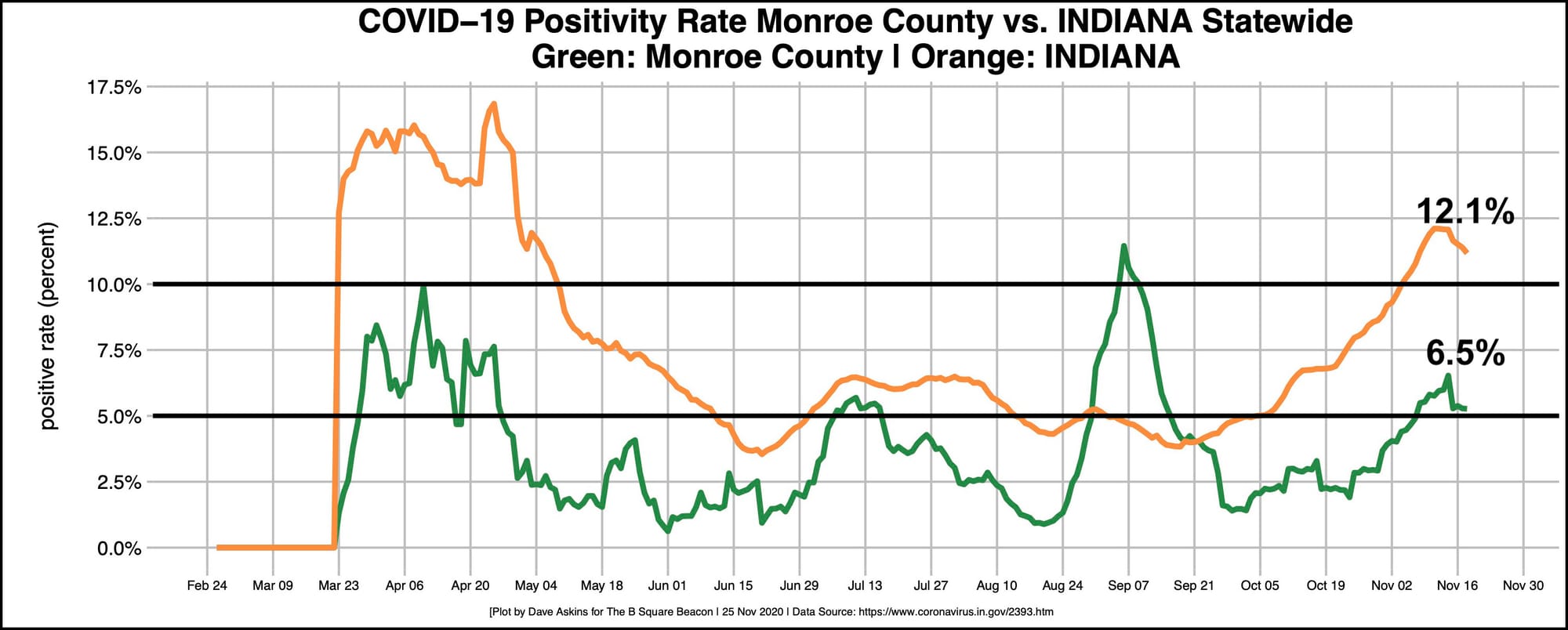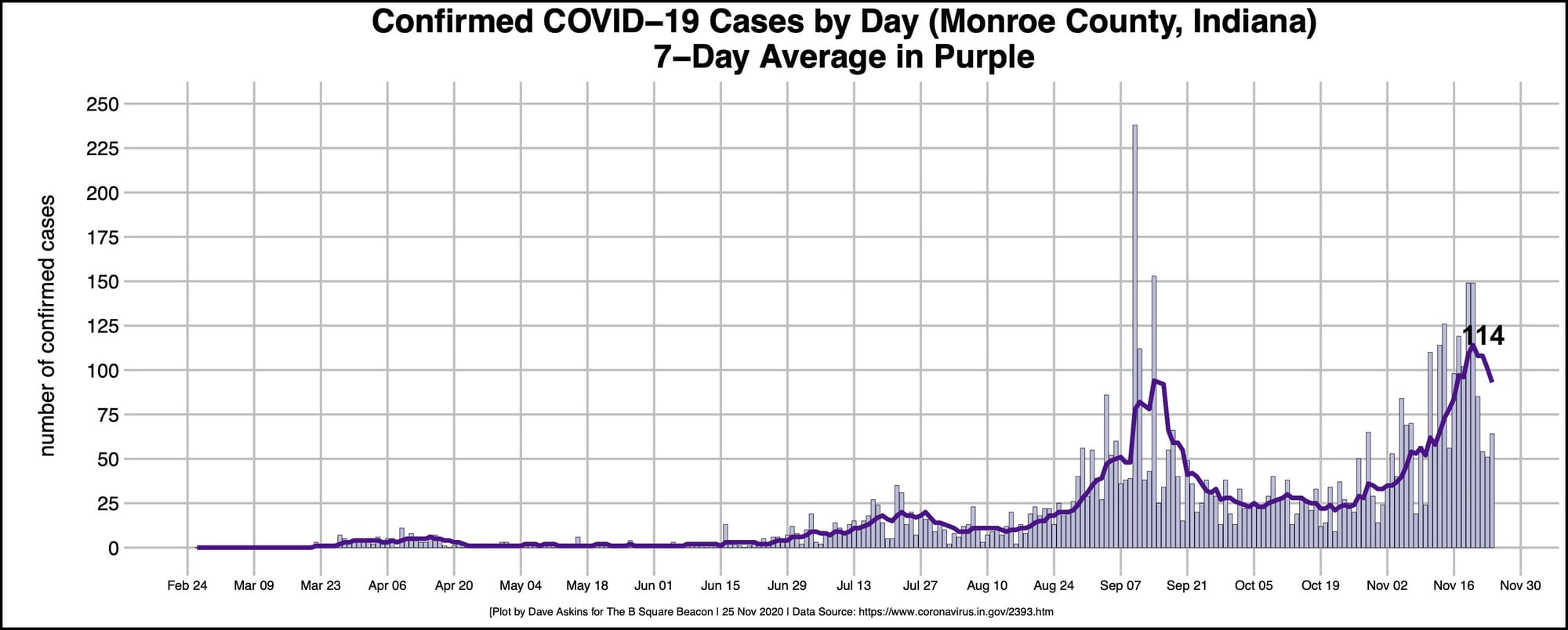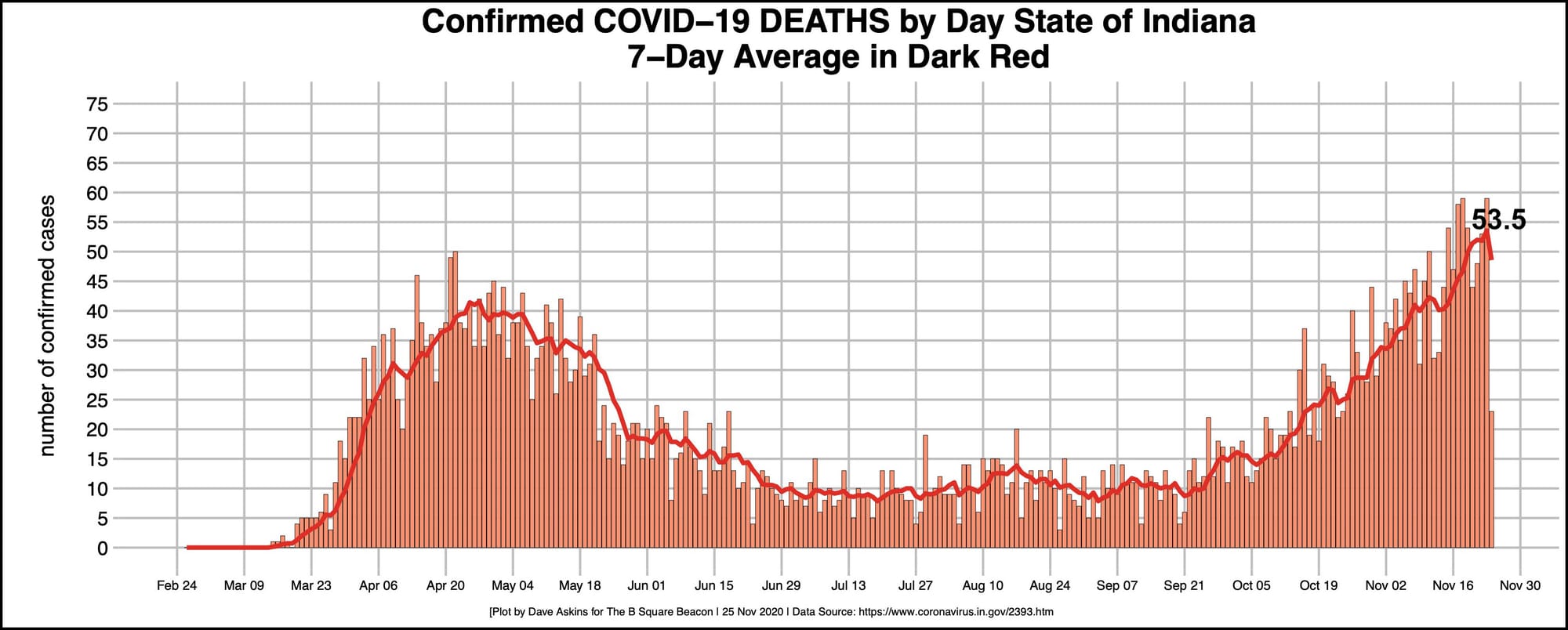COVID-19 Update: Health administrator asks everyone: “Where have you been in the last four days?”





Highlights from Wednesday’s press conference of local leaders on COVID-19 pandemic response included a couple of takeaways.
First, when the vaccine starts to arrive locally, expected in mid-December, that’s not the end of the COVID-19 marathon.
Second, part of what it means to keep running the race means keeping track of where you’ve been and who you’ve seen over the last few days. That way if you test positive, you know what to tell contact tracers.
The idea of keeping track of your own behavior, even if you have not yet tested positive, came from Monroe County health administrator Penny Caudill. She fielded a question about the followup interviews that contact tracers conduct with patients who have tested positive.
Patients are not asked if they have been in specific places, Caudill said. Rather they are asked, “Where have you been?”
Caudill then pivoted to a challenge for anyone who has not tested positive. What would you say if you had to answer the questions: “Where were you in the last four days? How many places have you been? How many people were near you without a mask within six feet? And how long is that list?”
Caudill’s caution: “If that list is more than one or two people and the people in your own household, it’s too many.”
Caudill said people who test positive are not asked if they have been in specific places. Responding to a question, she said patients are not asked if they voted or where. No voting locations had been identified as COVID-19 transmission hotspots, she said.
Caudill said the contact tracing interviews are being streamlined to include fewer questions.
The Wednesday press conference was shifted from Friday, due to the Thanksgiving Day holiday this week.
Big numbers continue
The COVID-19 numbers continue to pile up, across the state and locally. But later on Wednesday, Indiana governor Eric Holcomb pointed to one possible sign that a downward pattern could be developing. Holcomb looked to the 7-day rolling average positivity rate for that glimmer of hope.
Statewide, the 7-day rolling average positivity rate hit a recent peak of 12.1 percent, but has dropped a point over the last four days. In Monroe County, the recent peak was about half that, at 6.5 percent, but has also seen a decline of about a point to 5.2 percent.
Holcomb stopped short of calling it a trend: “It’s way too early to say this is a trend, and we have a long way to go.”
The rolling average daily death count across the state has hit 53 a day, which is about 10 more than the spring peak.
Monroe County has now recorded eight deaths from COVID-19 in the last 10 days, five in the last four days. That brings the total in Monroe County to 50 deaths from COVID-19.
The total number of cases per day looks like it could be leveling off statewide at around 6,500 cases. After hitting a 7-day rolling average of 114 a few days ago, the average in Monroe County has again dipped under 100.
This past week, the city of Bloomington announced several new positive tests by employees, including a fifth emergency dispatcher. Police chief Mike Diekhoff told The Square Beacon that two of the dispatchers who previously tested positive are back, which means that three are still out with COVID-19.
The most recent announcement from the city came Wednesday, about a Bloomington Transit bus driver, who tested positive the day before.
That brings the total number of city employee positive tests to 28.
Statewide, hospitalizations continue to increase. Brian Shockney, who’s president of IU Health’s south central region, said on Wednesday that the number of patients in Monroe County—counting IU Health Bloomington and Monroe Hospital—is the highest number that have been seen since the pandemic started.
“This is stressing our health system like never before,” Shockney said. The IU Health hospital has switched back a two-track system for treating emergency patients, where COVID-19 patients are treated in one location and all other patients are treated in another area.
Shockney said over the last two weeks, 50 percent of inpatients at Bloomington Hospital are from counties outside of Monroe County—including Lawrence, Greene, Owen, Morgan and Brown.
Vaccine as finish line to COVID-19 marathon?
Caudill and Shockney described plans for distribution of the COVID-19 vaccine after it arrives, which is expected in mid-December.
Shockney said, “We are looking forward to the first of the approved vaccines to be delivered to our region in mid-December. We have been developing plans for the distribution of this vaccine for the past several weeks.”
Caudill said, “Vaccine plans are underway. The state has vaccine plans, and certainly they follow the CDC guidelines.”
As far as the local effort goes, Caudill said, “We are submitting our plans early next week—they are due.” Caudill added, hospitals with frontline health care workers will be the first priority for vaccine distribution. After that come long-term care workers and other essential workers.
Caudill cautioned, “The vaccine will not come all at once. It will come in phases. And there will be a lot of triaging that has to be done.”
About the metaphor that likens dealing with COVID-19 to running a marathon, Caudill and Shockney confirmed that the arrival of a vaccine is not the finish line.
Could the finish line be defined in terms of percentage of the population who have been vaccinated or as some benchmark for the number of new confirmed cases?
The statistic that Caudill mentioned specifically as helping to define a finish line is a low positivity rate. She put the time frame for a finish line at later in 2021.
Caudill hopes that the finishing tape starts to become clearer, “so that we can see it coming, and that it brings us hope and gets us through that.”
Shockney talked about the fact that it’s hard mentally, because we can’t see the finish line: “We can’t see the tape, even though we keep running the distance. And so we just have to hang in there.”
Shockney cautioned that when people start getting vaccinated, even those who get the vaccine first will need some time to develop immunity. It’s a two-dose vaccine that requires 21 days between shots, he said.
Shockney agreed with Caudill on the time frame. “It’s going to be later in 2021, before we’d be able to see a red tape or hear people cheering at the finish line.”




Comments ()